
Ingredient
Mussels
The Ocean's Delicacy
Mussels have a dark, elongated shell with a glossy blue-black color. The meat inside is plump, tender, and slightly sweet. They are commonly used in seafood dishes, such as soups, stews, pastas, and paellas.
Origins and history
Mussels have been consumed by humans for thousands of years. They were a staple food source for coastal communities in ancient times and were even used as currency in some regions. Today, mussels are enjoyed worldwide and are particularly popular in European and Asian cuisines.
Nutritional information
Mussels are a good source of protein, omega-3 fatty acids, iron, and vitamin B12. They are also low in fat and calories, making them a nutritious addition to a balanced diet. However, they can be high in sodium, so individuals on a low-sodium diet should consume them in moderation.
Allergens
Mussels are known to cause allergic reactions in some individuals, particularly those with shellfish allergies. It is important to exercise caution and seek medical advice if you have a known shellfish allergy.
How to select
When selecting mussels, choose ones that are tightly closed or close when tapped. Avoid mussels with cracked or broken shells, as they may be dead or spoiled. Fresh mussels should have a mild, briny smell of the ocean. Discard any mussels that have a strong, unpleasant odor.
Storage recommendations
Store live mussels in the refrigerator in a bowl or container covered with a damp cloth or paper towel. Do not store them in airtight containers or in water, as they need to breathe. Consume them as soon as possible, preferably within a day or two of purchase, for the best flavor and quality.
How to produce
Mussels are typically harvested from the wild or cultivated in aquaculture farms. They require clean, nutrient-rich water to thrive. Cultivated mussels are often grown on ropes or in mesh bags suspended in the water. They are filter feeders, meaning they extract nutrients from the surrounding water.
Preparation tips
Before cooking mussels, rinse them under cold water and remove any beards (fibrous threads) attached to the shells. Discard any mussels that do not close after tapping or those with cracked shells. Mussels can be steamed, boiled, grilled, or baked. They are often cooked with aromatic ingredients such as garlic, white wine, and herbs to enhance their natural flavors.
Substitutions
Clams or cockles can be used as substitutes for mussels in recipes. They have a similar briny flavor and texture. However, the size and cooking time may vary. Alternatively, tofu or tempeh can be used as vegetarian substitutes to add a meaty texture to dishes.
Culinary uses
Mussels are commonly used in dishes such as moules marinières (steamed mussels in white wine), seafood pasta, bouillabaisse, and Thai curry. They are also delicious when added to paella, chowders, and seafood risottos.
Availability
Mussels are widely available in coastal regions and are commonly cultivated in countries such as Belgium, France, Spain, Italy, and New Zealand. They can also be found in seafood markets and specialty stores in other parts of the world.
More ingredients from this category
Recipes using Mussels » Browse all
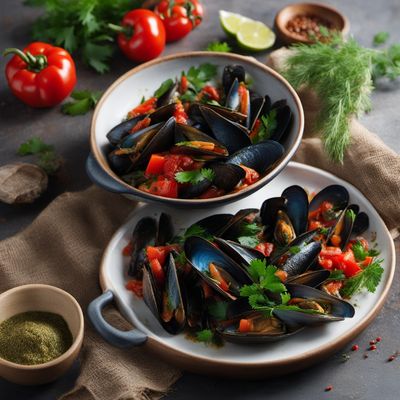
Caspian Sea Mufete
Savory Seafood Delight: Caspian Sea Mufete
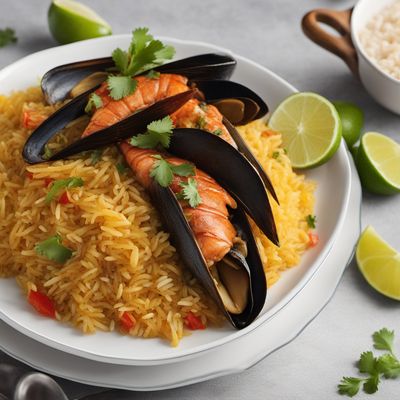
Peruvian Seafood Rice
Oceanic Delight: Peruvian Seafood Rice

Russian Fish Soup
Savory Delight: Russian Fish Soup with a Twist
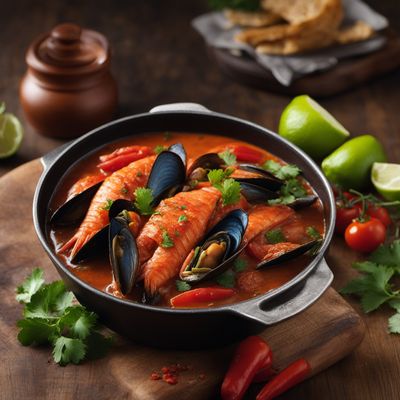
Panamanian Fish Stew
Savory Seafood Delight: Panamanian Fish Stew

Chinguirito with a Lower Saxon Twist
Savory Seafood Delight: Lower Saxon Chinguirito
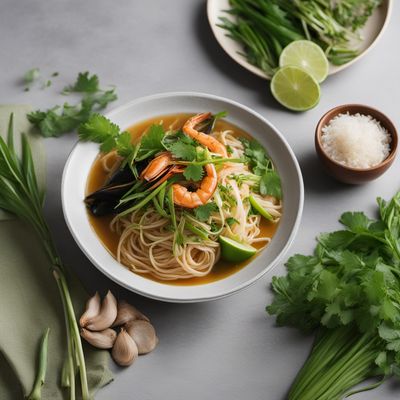
Mì Quảng with a Twist: Island-Inspired Noodle Delight
Atlantic Island Noodle Fusion: A Taste of Mì Quảng

Sopa de Locos Adapted to São Tomé and Príncipe Cuisine
São Toméan Seafood Stew: A Taste of the Atlantic

Sardinian-style Seafood Soup
Mediterranean Delight: Sardinian-style Seafood Soup

Mediterranean Mussels in Tomato and Wine Sauce
Savor the Flavors of the Adriatic: Croatian-style Mussels in a Tangy Tomato and Wine Sauce
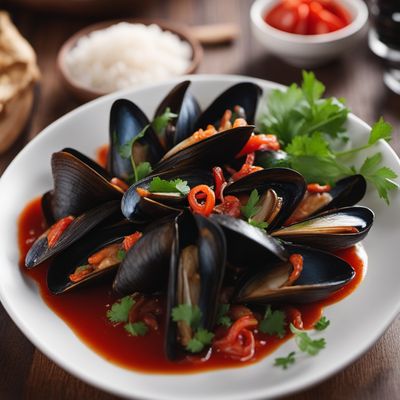
Mamallena with a Liaoning Twist
Savory Seafood Delight: Liaoning-style Mamallena

Italian Gumbo
Mediterranean Seafood Stew: Italian Gumbo Twist

Plateau de Fruits de Mer with a Twist
Oceanic Delight: A Modern Twist on Plateau de Fruits de Mer
